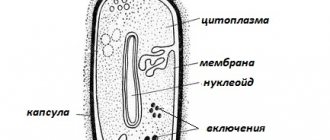Isomerism and nomenclature of alkenes
Alkenes, like alkanes, are characterized by structural isomerism. Structural isomers, as you remember, differ from each other in the structure of the carbon skeleton. The simplest alkene, characterized by structural isomers, is butene.
A special type of structural isomerism is isomerism of the position of the double bond.
Almost free rotation of carbon atoms is possible around a single carbon-carbon bond, so alkane molecules can take on a wide variety of shapes. Rotation around the double bond is impossible, which leads to the appearance of another type of isomerism in alkenes - geometric, or cis- , trans -isomerism.
Cis isomers differ from trans isomers in the spatial arrangement of molecular fragments (in this case, methyl groups) relative to the π
-connections, and therefore properties.
Alkenes are isomeric to cycloalkanes (interclass isomerism), for example:
The IUPAC nomenclature for alkenes is similar to that for alkanes.
Naming a hydrocarbon begins with identifying the main chain —the longest chain of carbon atoms in the molecule. In the case of alkenes, the main chain must contain a double bond.
The numbering of the atoms of the main chain begins from the end to which the double bond is closest. For example, the correct connection name is
5-methylhexene-2 , not 2-methylhexene-4, as one might expect.
If the position of the double bond cannot determine the beginning of the numbering of atoms in the chain, then it is determined by the position of the substituents in the same way as for saturated hydrocarbons.
The formation of names for alkenes occurs in the same way as the names of alkanes. At the end of the name, indicate the number of the carbon atom at which the double bond begins, and a suffix indicating that the compound belongs to the class of alkenes, -ene
.
For example:
Structure of alkenes
Alkenes are acyclic hydrocarbons containing in the molecule, in addition to single bonds, one double bond between carbon atoms and corresponding to the general formula CnH2n. their second name - olefins - by analogy with unsaturated fatty acids (oleic, linoleic), the remains of which are part of liquid fats - oils.
Carbon atoms between which there is a double bond are in a state of sp2 hybridization. This means that one s and two p orbitals are involved in hybridization, and one p orbital remains unhybridized. The overlap of hybrid orbitals leads to the formation of a σ bond, and due to the unhybridized p orbitals of neighboring carbon atoms, a second, π bond is formed. Thus, a double bond consists of one σ- and one π-bond. The hybrid orbitals of the atoms forming a double bond are in the same plane, and the orbitals forming a π bond are located perpendicular to the plane of the molecule. A double bond (0.132 im) is shorter than a single bond, and its energy is greater, because it is stronger. However, the presence of a mobile, easily polarized π bond leads to the fact that alkenes are chemically more active than alkanes and are able to undergo addition reactions.
Structure of ethylene
Double bond formation in alkenes
Chemical properties
Features and examples of the chemical properties of alkenes are given in the table.
| Reaction | Description | Reaction equations |
| Hydrogenation – addition of hydrogen | It occurs at high pressure in the presence of a catalyst - nickel, palladium or platinum. Alkanes are formed - saturated hydrocarbons | CH2=CH-CH3 + H2 → CH3-CH2-CH3 |
| Halogenation – addition of halogens | Occurs under normal conditions. Halogens add via a double bond. Dihaloalkanes are formed | – CH2=CH2 + Cl2 → Cl-CH2-CH2-Cl (1,2-dichloroethane); – CH3-CH=CH-CH3 + Br2 → CH3-CH-Br-CH-Br-CH3 (2,3-dibromobutane) |
| Hydrohalogenation – addition of hydrogen halides | Electrophilic addition reaction. An electrophile is a hydrogen proton in a halogen. Haloalkanes are formed | CH2=CH2 + HCl → CH3-CH2-Cl (chloroethane) |
| Hydration – addition of water | The reaction takes place in the presence of inorganic acids - sulfuric and phosphoric. They act as a catalyst and are sources of hydrogen. Monohydric alcohols are formed | CH2=CH2 + H2O → CH3-CH2OH |
| Polymerization – increase in the number of atoms | Occurs in the presence of a catalyst at elevated pressure and temperature. Polyethylene, polyvinyl chloride, polypropylene are produced in this way | nCH2=CH2 → (-CH2-CH2-)n |
| Combustion | Occurs when there is excess oxygen | CH2=CH2 + 3O2 → 2CO2 + H2O |
| Incomplete oxidation | Occurs in the presence of a catalyst. The alkene mixed with oxygen is passed over heated silver. Epoxide is formed - alkene oxide | 2CH2=CH2 + O2 → 2CH2-O-CH2 |
| Wagner reaction | Oxidation with potassium permanganate in an alkaline or neutral environment. Alcohols are formed | 3CH2=CH2 + 2KMnO4 + 4H2O → 3CH2OH-CH2OH + 2KOH + 2MnO2 |
| Oxidation with boiling potassium permanganate in an acidic medium | Carboxylic acids are formed | CH3-CH=CH-CH3 + 4[O] → 2CH3COOH |
When heated in the presence of a catalyst, alkenes undergo an isomerization reaction. The position of the double bond or the structure of the carbon skeleton changes. For example, butene-1 (the position of the double bond between the first and second atoms) becomes butene-2 (the double bond is “shifted” to the second atom).
Rice. 3. Isomerization of alkenes.




